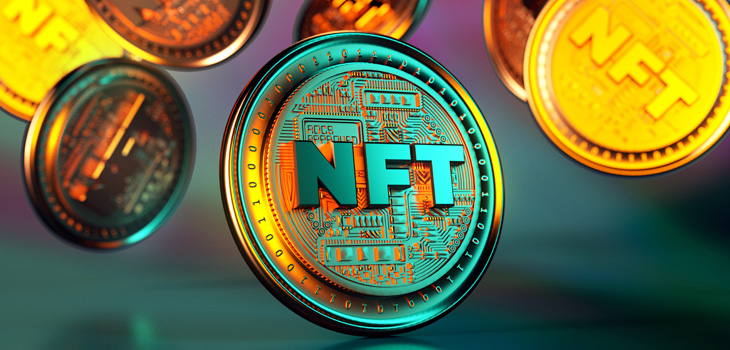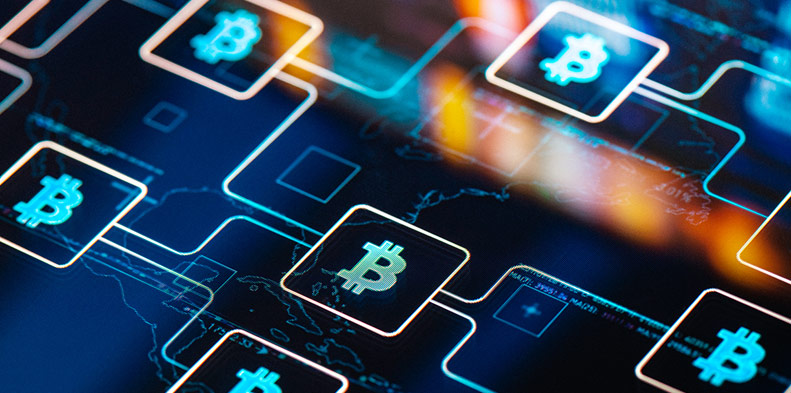NFTs: art, real estate and so much more

What is an NFT?
“NFT” stands for “non-fungible token.” It is a blockchain token that can represent a specific asset, including things such as artwork, videos, music or even a tweet. When something is fungible, that means it can be readily interchanged, like money. But if something is non-fungible, it has unique properties and can’t be interchanged with something else.1 For example, each loonie is worth exactly one Canadian dollar, and is therefore fungible. A concert ticket, on the other hand, would be non-fungible. Even if every ticket were the same price, the tickets wouldn’t be directly exchangeable. Each ticket represents a specific seat and specific date, and no other ticket has those exact characteristics.2
NFTs use blockchain technology, and can be transferred from user to user via their underlying blockchain networks. NFTs provide a digital certificate of authenticity. Let’s say a famous artist issues the rights of ownership to a piece of digital art as an NFT. Even if everyone can see the picture online, the NFT would allow you to be the provable owner of that piece of art. It’s sort of like the way anyone can go to a museum and see a painting – that’s not the same thing as owning the painting. In fact, some artists even sign their NFTs by storing their signature in the file’s metadata.3
Since November 2017, US$174 million has been spent on NFTs around the world.4
What can NFTs represent?
NFTs can represent various things. As mentioned, many popular NFTs are linked to pieces of digital artwork, but other NFTs are associated with collectibles like Pokémon cards, sports memorabilia, memes, videos and miscellaneous online items like tweets or blog posts.
Many collectable and memorabilia transactions have migrated to the digital realm and are now being conducted via NFTs. Collectables, whether they are rare baseball cards, tickets to a famous concert, rare wines or photos of a cute kitten, get their value from their uniqueness. This makes them ideally suited to NFTs. According to Market Decipher, the global collectables market is valued at more than US$400 billion, and has potential to grow at a 7% compound annual growth rate between 2021 and 2028.5
The most expensive known NFT sale is a digital work by the artist Pak titled “The Merge,” which sold for US$91.8 million in December 2021.6 Other famous people who have sold NFTs include the musician Grimes, who sold digital art for over US$6 million, and Twitter founder Jack Dorsey, who sold his first tweet for US$2.9 million.7 Dorsey’s NFT appears to have since lost up to 99% of its value, which illustrates some of the risks of investing in NFTs.8
How do NFTs work?
NFTs are stored via blockchain networks such as Ethereum. This makes it possible to transfer ownership between people. But in order to buy and sell NFTs, you need a digital wallet, like the one you would use to store cryptocurrencies. And in most cases, you would also need to buy digital currency, such as ether, that you can use to pay for the NFT.
Once you have your digital currency, you’ll need to visit an NFT marketplace (more on that below). When you’ve found the verified NFT you want to buy, you link your digital wallet to the marketplace and buy the NFT. It will then be stored in your digital wallet. People often display their NFTs in their icon photos on their social media profiles.9 To do this, you have to link the digital wallet associated with your NFT to your social media account. Other people display their digital artwork on large monitors, while others still buy virtual land on which they build virtual NFT galleries. You can peruse virtual worlds like Decentraland to check out other people’s collections.10
Where can you buy and sell NFTs?
The largest NFT marketplaces include peer-to-peer platforms like OpenSea and Rarible, which are open marketplaces where artists and creators sell NFTs. From February 2021 to February 2022, the number of active users on OpenSea (this refers to registered users who have made at least one NFT transaction) rose from about 15,000 to more than 500,000.11 Another popular NFT marketplace is Foundation, where artists must receive an invitation from other artists on the site to sell their digital wares.
When using NFT marketplaces, it is important to realize the verification process varies from platform to platform. This means you should do your research to ensure you know exactly what you are buying.
Who can buy and sell NFTs?
The short answer is that anybody who can access a digital wallet and has enough money to fund it with digital currency can buy NFTs. The market for NFTs is relatively new, but in some ways similar to established markets for physical art. Some people buy NFTs as an investment they hope will appreciate in value, while others buy NFTs because the works have meaning for them. The market for NFTs is based entirely on what others are willing to pay for the digital assets.12
Bottom line
NFTs have taken the world by storm over the past few years, with large sums of money changing hands as the digital tokens are bought and sold online. NFTs can represent almost any physical or digital object, but they have become especially popular among collectors of memorabilia. With some basic technical know-how, anyone can participate in the market for NFTs. But they are like any investment. You should assess your risk tolerance and financial situation, and make sure you do plenty of research before you buy NFTs.
